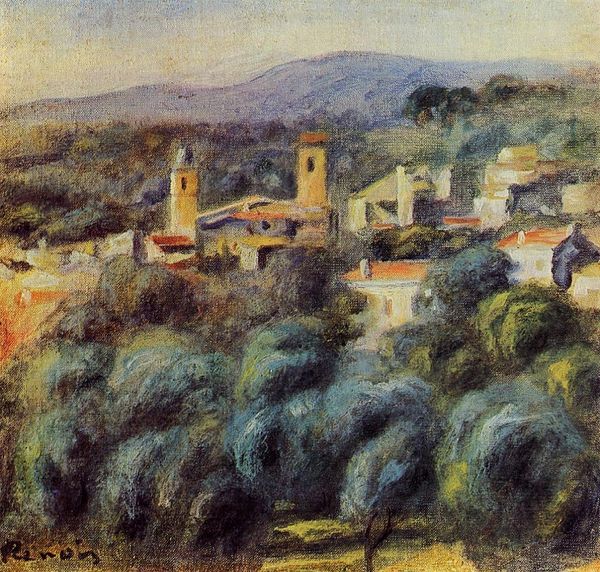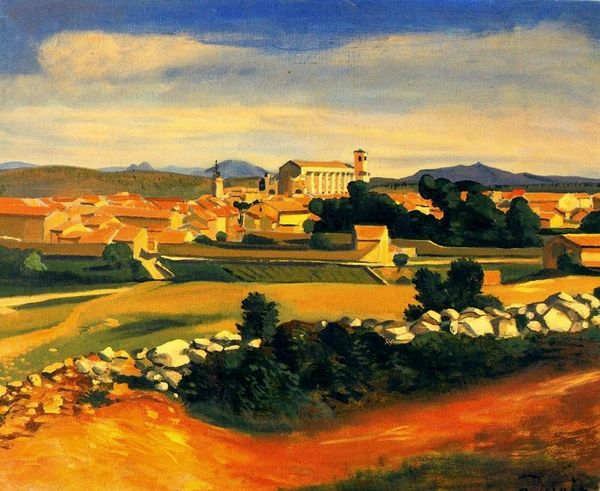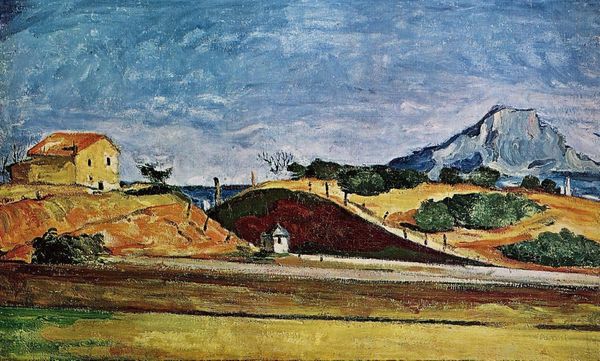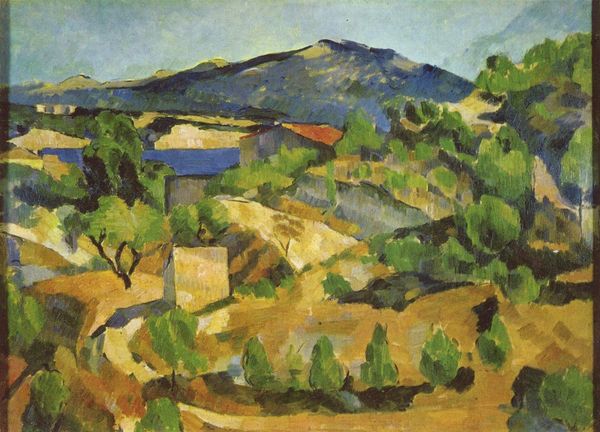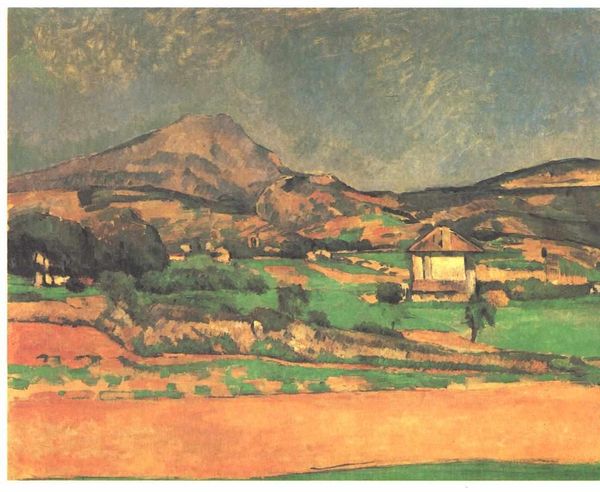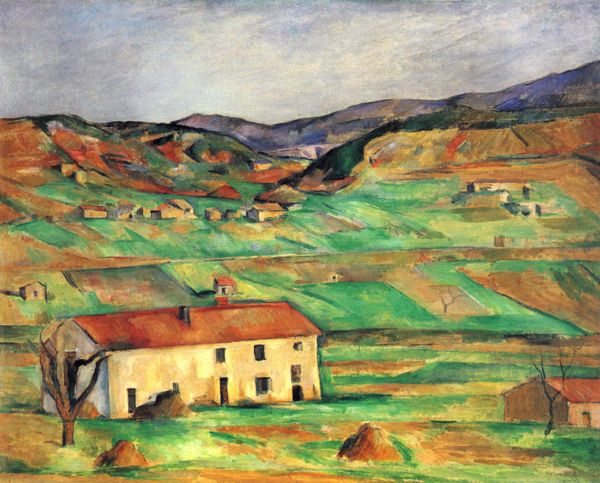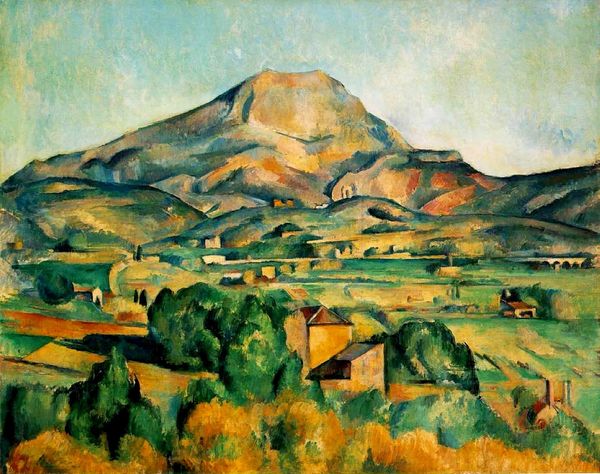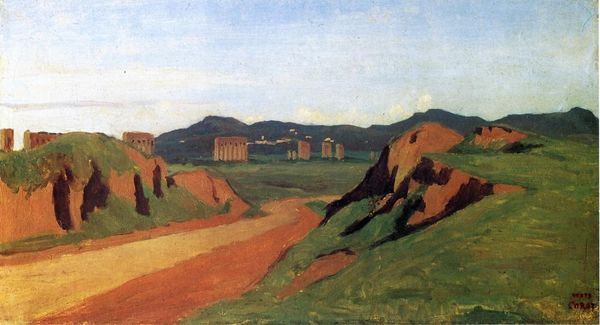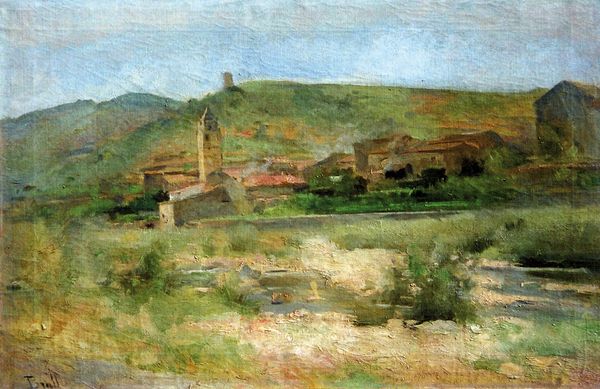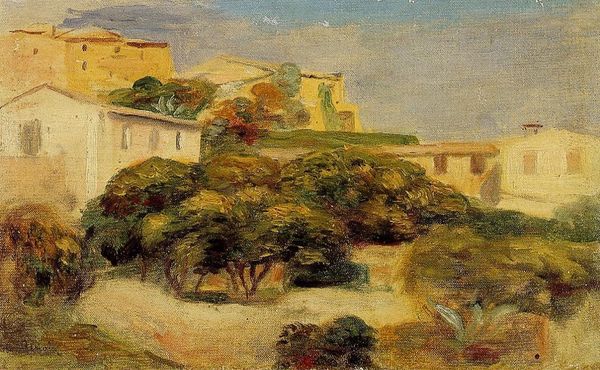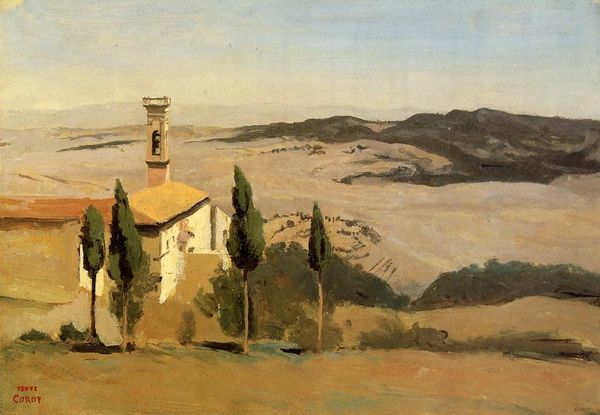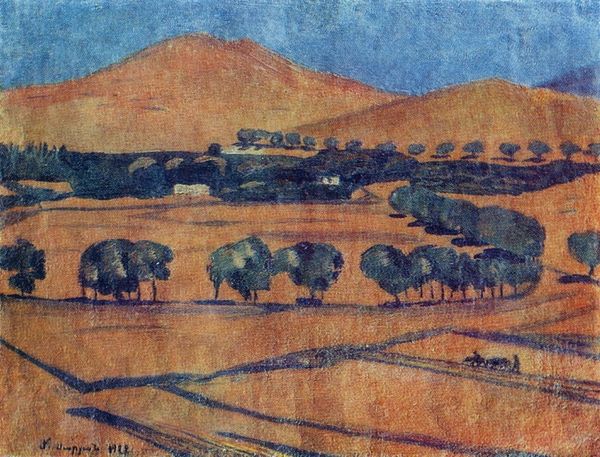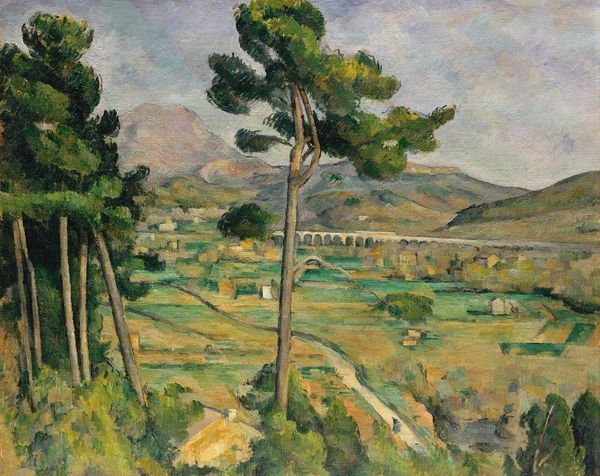
Copyright: Public domain
Curator: What strikes me first about Paul Cézanne’s "Factories Near Mont de Cengle," painted around 1870, is the sheer weight of the smoke plumes against that sky. Editor: Yes, it's an oddly charming depiction of industrial incursion. You can see the layering of paint, almost built up like the industrial structures themselves. There’s a visible materiality at play here. It feels almost as if the canvas is constructed from the same earth and materials that comprise the scene. Curator: Indeed. We often discuss Impressionism in terms of light and color, but consider that Cézanne was also very interested in how these new factories impacted the local communities and the very idea of work and labor in France at that time. Editor: Absolutely. This was a period of huge social change, the rise of the working class. The chimneys pierce the skyline as visible signals of this transition. You have that unsettling contrast between idyllic landscape and those markers of industrial toil, those towering stacks breathing smoke. Curator: I appreciate how Cézanne is laying bare the construction of both the landscape and industry simultaneously using similar, gestural strokes. Note, too, how the impasto method builds a tangible reality on the canvas—the same weight afforded to that field and those factories is literally, materially, echoed in how he’s applying the paint. Editor: You can read it as an interrogation of what is considered "natural" versus "artificial" during this transformative era. Is nature truly distinct from industry when the same human activity constructs both? It's powerful to consider that in the context of how the workers themselves lived near the depicted locations. Curator: The brushstrokes have that urgency to document. It also poses questions about progress: is it being created or extracted? Editor: Cézanne has offered us something multilayered—a physical rendering of material, an observation of early industrial development, and the inherent social tensions rising between environment, work and class. It goes far beyond just a picture postcard of the past. Curator: Agreed, and understanding the complex social dynamics during this era enriches the very perception of this painting. Editor: Precisely, and reflecting on it this way enables us to question what stories we, in turn, can tell using visual languages.
Comments
No comments
Be the first to comment and join the conversation on the ultimate creative platform.
